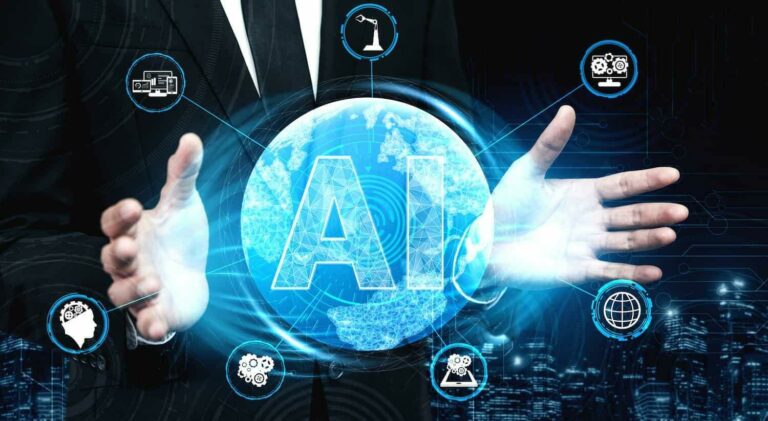We need it every day and also need it to be stored and managed securely. If your store your healthcare data in an NFT’s metadata, a professional could verify your current health status without seeing other confidential information. This way, you can control the information you choose to share with the organization. Like an avatar, NFT-based properties or objects in the metaverse can also serve as pieces of your digital identity. These objects can be virtual land NFTs, accessories like clothing, weapons for avatars or even pets.
- This development was met with criticism on the initial demand, claiming that the UN’s action was disproportionate and resulting in harm for the weakest .
- However, identity as such is not at the center of those legal transactions and legal personhood could be described as a “technical device” (Brozek, 2017, p.12).
- The conflict between Russia and Ukraine may result in heightened concerns over security and cyber threats.
- Uniform Resource Identifier and the internationalized version Internationalized Resource Identifier are the standard for identifiers for websites on the World Wide Web.
- Non-resolvable identifiers, such as a person’s real name, or the name of a subject or topic, can be compared for equivalence but are not otherwise machine-understandable.
The car rental and hotel company may request authentication that there is credit enough for an accident, or profligate spending on room service. Thus a card may later be refused when trying to purchase an activity such as a balloon trip. Though there is adequate credit to pay for the rental, the hotel, and the balloon trip, there is an insufficient amount to also cover the authorizations.
It’s not just about security
While the first implementation steps of Kiva seem promising, current practice is still reliant on guardian- and custodianship. At least during this transition period there is a need for concrete governance frameworks that limit and mitigate risks, particularly relating to privacy and individual autonomy (Wang and De Filippi, 2020, p. 13–14). Another promise of putting the individual “in charge” of its own identity management has to do with aspects of social participation and the third trend creating demand for enhanced digital identities. Although it is often a non-issue for individuals living in developed countries, many people across the world are excluded from the social ecosystem as they cannot prove their identity. The World Bank Group estimated in 2018 that globally ~1 billion people face challenges when proving their identity (World Bank Group, 2018, p. 3). The UN acknowledged this pressing need in Sustainable Development Goal 16.9, which enshrines a right to legal identity for all, including birth certificates.
However, this requires a complete overhaul of the way identities are managed on a national and global scale and will take years if not decades to change. Nevertheless, according to an estimation by the World Economic Forum published in late 2018, there will be 150 million people with blockchain based identities by 2022 (World Economic Forum, 2018a, p. 19). Digital death is the phenomenon of people continuing to have Internet accounts after their deaths. blockchain identity management This results in several ethical issues concerning how the information stored by the deceased person may be used or stored or given to the family members. It also may result in confusion due to automated social media features such as birthday reminders, as well as uncertainty about the deceased person’s willingness to pass their personal information to a third party. Many social media platforms do not have clear policies about digital death.
Digital Identity is a technical concept that shows a relation between a human and its digital presence.
This is often attached to completely unintended consequences, as an example from humanitarian aid shows. In 2019 the UN World Food Programme demanded from Houthi officials in Yemen to allow for the deployment of biometric technologies like iris scans and digital fingerprints to monitor suspected fraud during food distribution . The refusal by the Houthi officials to deploy biometrical recognition over surveillance concerns lead to the cancellation of the aid efforts. This development was met with criticism on the initial demand, claiming that the UN’s action was disproportionate and resulting in harm for the weakest .
For example, if you are asked to prove you are over 18, you could provide a simple yes/no response and avoid sharing any other personal details. Fintech and Digital payment platforms make use of digital identities in order to accelerate secure transactions and improve merchant onboarding. By having digital identities whilst gaming or gambling online on their platforms, businesses can block collusive play and comply with regulations. As an eCommerce platform, it is important to secure your shopper’s digital identities to reduce fraud losses and get then to add manual reviews. It also helps them to pick up right where they left off, thus enhancing the user experience.
Top Cryptocurrencies Face Challenges, Bitcoin and Ether Fail to Reach Key Levels
This pilot seems particularly interesting, since such systems could remove the requirement to create a new account when signing up to a new mobility service. However, from the description of the pilot it is not clear whether and how payment could be handled. The digital identity systems described in this section usually use a publicly verifiable digital signature showing governmental approval and are therefore recognized. Hence, these identities could also be used to communicate with other (semi-)public institutions (e.g., hospitals), as well as civil society organizations .
This token is non-transferable, meaning you can’t send it to any other wallet. As each token is linked to an individual, you can use them as proof of identification. Another key benefit of a decentralized identity is that it can act as a passport to access multiple ecosystem applications. For example, your access to multiple different metaverses, platforms, and private member groups might rely on the same crypto wallet; and you may even be able to use the same assets across multiple platforms and services. Using the blockchain for digital identities enables a secure digital footprint by providing a host of benefits such as data ownership, immutability, and accessibility. Information provided on Forbes Advisor is for educational purposes only.
Identity Management
One of the best ways to streamline the ownership and distribution of personal data such as medical records, drivers licenses, or degrees is through digital identities. NFT avatars are popular since they hold value as a unique digital identity, investment, and “access card” for communities. Further, every NFT is uniquely verifiable through the blockchain — which means your identity is yours and yours alone, just like in the real world. Users have little digital sovereignty and virtually no say in how these services use their data. Additionally, centralized companies that store large amounts of personal data are a huge target for would-be hackers, leaving your data at risk.
Most of these practices can apply to enterprises as well as to individuals looking to safeguard their own identity. Digital identities are necessary to access software-as-a-service and cloud-hosted applications. These resources are often used across the organization, meaning every individual user requiring access will also need a digital account to represent them.
What is Digital Identity? Why Does It Matter?
Well, it turns out that the biometric factors are either too unreliable or too costly to gain widespread adoption. So, while multi-factor authentication may be an appropriate generalization, two-factor authentication is the practical and more specific name. As a result of faster turnaround times and fewer touchpoints, you can make sure your customers have a better and more enhanced https://www.globalcloudteam.com/ experience. Digital identities safeguard all of your data under one organized folder, thus enhancing operational efficiency manifold. Update software on all systems regularly and make sure they are secured properly. Worldcoin is trading for $2.24 at time of writing, up 34% in the last 24 hours but down 33% from its all-time high of $3.30 reached just seven hours ago.
It provides various key benefits to enterprises, users, and IoT management systems. With proper digital identity management, you can dramatically improve the security and privacy of your IT infrastructure. However, the ability to understand and harness the power of external digital identity is pivotal to effectively scale businesses in this era of digital transformation. Businesses are now focusing heavily on external, user-centric identity platforms that provide the tools to build comprehensive customer profiles across multiple channels. A robust digital identity solution enables organizations and individuals to interact securely and easily, providing a good user experience while helping reduce time and costs.
Digital identity as a character represents information such as:
Nevertheless, it seems not unlikely that the technology will continue to improve and increase efficiency over time. In many ways, digital identity systems using DLT, self-sovereign identity and ZKP can be understood as a response to the commodification of digital identity by powerful private Internet corporations such as Facebook, or Google. After all, the original intention of Blockchain was to get independent of centralized institutions and trust anchors (Nakamoto, 2008, p. 1). The possibilities for DLT-based identity solutions in the private sector are frequently intertwined with those in the public sector as some require verified credentials by governmental institutions. The digitization of identity management is certainly also appealing in a cross-border context.


